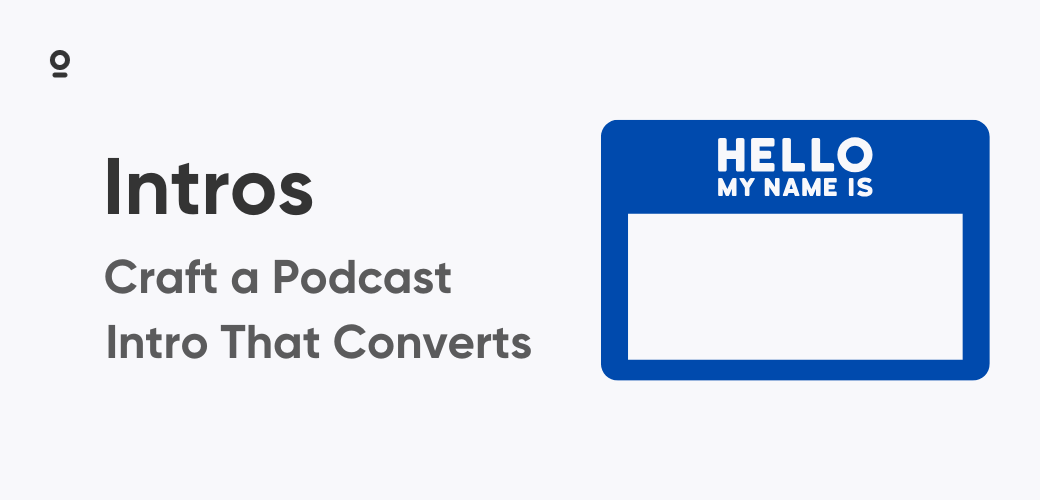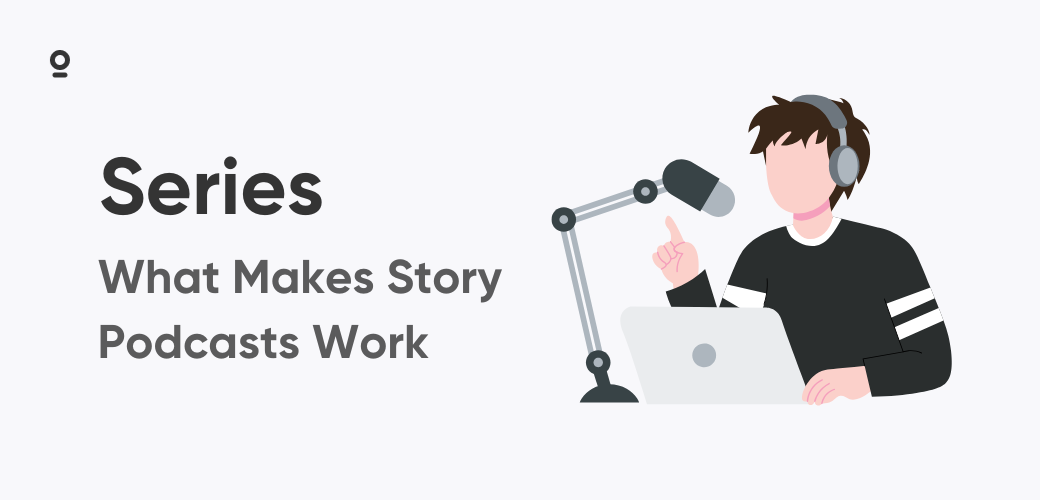Roughly 20 to 35 percent of listeners abandon podcasts within the first five minutes. That statistic should make every podcaster pay attention to their intro.
The difference between a loyal subscriber and a lost opportunity often comes down to those opening seconds. Get them right, and listeners settle in for the full episode. Get them wrong, and they're already scrolling to the next show.
The 30-Second Rule That Changes Everything
How long should a podcast intro be? The data is clear: 15 to 30 seconds maximum. Go longer, and listener patience evaporates faster than morning dew.
This isn't about rushing. It's about respecting attention spans in an era where 30 million podcast episodes compete for ears. Every second counts, and every word needs to earn its place.
The best podcasts prove this. The Daily from The New York Times hooks listeners in under 20 seconds. How I Built This uses a compelling guest quote before the 30-second mark. These shows understand that modern listeners make snap decisions.
Anatomy of a Podcast Intro That Actually Works
Creating an effective podcast intro requires assembling specific elements in the right order. Miss one, and the whole structure weakens.
The Hook: Your Make-or-Break Moment
Before anything else, before your name, before your music, you need a hook. This could be:
- A provocative question: "What if everything you knew about sleep was wrong?"
- A surprising statistic: "87% of successful entrepreneurs failed at least three times first"
- A compelling quote from later in the episode: "I realized I was one decision away from bankruptcy"
- A bold statement: "This conversation changed how I think about money forever"
The hook creates curiosity. Without it, nothing else matters.
Host Introduction: Why Should Anyone Listen to You?
New listeners need context fast. Who are you? Why does your opinion matter? Skip the lengthy bio and focus on relevant credibility:
Too long: "I'm Sarah Chen, I graduated from MIT with a degree in aerospace engineering, worked at NASA for 10 years, then transitioned to science communication where I've written for various publications..."
Just right: "I'm Sarah Chen, former NASA engineer turned science communicator"
State your expertise in under 10 words. Let your content prove your worth.
Show Description: The Value Promise
Explain what listeners gain by staying. Focus on benefits, not features:
Weak: "A podcast about personal finance" Strong: "Your weekly guide to building wealth without sacrificing your life"
Weak: "We discuss technology trends" Strong: "Decoding tech trends that will impact your business next year"
The description should answer: "What's in it for me?"
Episode Roadmap: Set Expectations
Give listeners a preview without spoiling the payoff. Think movie trailer, not plot summary:
"Today, we're uncovering why traditional networking advice fails introverts, and sharing three strategies that actually work when you'd rather be home reading."
This creates anticipation while respecting the listener's time investment.
The Music Question: Setting the Sonic Stage
Intro music for podcast success isn't about finding the coolest track. It's about matching your brand's personality while staying legally compliant.
Choosing Your Sound
Your music should:
- Match your show's energy (upbeat for motivation, mellow for meditation)
- Stay subtle enough to support, not overshadow, your voice
- Be instantly recognizable after a few episodes
- Feel authentic to your brand
Where to Find Legal Music
Avoid copyright strikes by using:
- Free options: YouTube Audio Library, Pixabay, Free Music Archive
- Paid quality: Epidemic Sound, AudioJungle, Soundstripe
- AI-generated: Mubert, Soundful (for unique, royalty-free tracks)
Pro tip: Start your music mid-track, not at the beginning. Songs often build slowly, but your intro needs immediate energy.
How to Make a Podcast Intro: The Step-by-Step Process
Step 1: Script It First
Write every word. Yes, even if you prefer improvising. Your intro needs precision. Here's a template that works:
[HOOK - 5 seconds]
"What if I told you that 90% of productivity advice is making you less productive?"
[MUSIC STARTS]
[HOST INTRO - 5 seconds]
"I'm Alex Kumar, behavioral psychologist and recovering workaholic."
[SHOW DESCRIPTION - 10 seconds]
"Welcome to The Focus Fix, where we separate productivity fact from fiction using actual science."
[EPISODE PREVIEW - 10 seconds]
"Today, we're exposing why multitasking is killing your brain cells and sharing the one technique that neuroscientists actually use to get things done."
[MUSIC FADES]
Total time: 30 seconds exactly.
Step 2: Record Like a Pro
Quality matters more in your intro than anywhere else. First impressions stick.
Use Zencastr's local recording feature to capture studio-quality audio regardless of internet connection. This eliminates the amateur-hour sound of laggy, compressed audio that screams "unprofessional" before you've said a word.
Record multiple takes. Your intro should sound effortless, which ironically requires effort.
Step 3: Layer Your Elements
Import your music and voiceover as separate tracks. Set your voice at -6dB and your music at -20dB as starting points. The music should whisper, not shout.
Fade music up over 1-2 seconds to avoid jarring starts. Fade down as you begin speaking. These small touches separate polished podcasts from amateur hour.
Step 4: Test Everywhere
Your carefully crafted intro might sound perfect in your headphones but terrible in a car. Test on:
- Phone speakers
- Car stereo
- Cheap earbuds
- Quality headphones
- Laptop speakers
Adjust until it works everywhere. Your listeners won't accommodate bad audio; they'll just leave.
Common Intro Mistakes That Kill Podcasts
The Autobiography Trap
"Welcome to my podcast. I started this because I've always been passionate about this topic since I was young, and my friends kept telling me I should start a podcast, so here we are..."
Nobody cares about your podcast origin story in the intro. Save it for a dedicated episode.
The Rambling Description
"This is a podcast where we talk about entrepreneurship, but also mindset, and sometimes marketing, plus productivity tips, and occasionally we interview people, but not always..."
Pick a lane. Clarity beats comprehensiveness.
The Copyright Bomb
Using your favorite song without permission won't just get your episode pulled; it can get your entire podcast banned from platforms. That 30-second clip of your favorite band? It's not worth losing your show.
The Energy Vampire
Starting with low energy or apologetic tones signals that even you aren't excited about your content. If you sound bored, listeners assume they will be too.
The Assumption Error
"As you all know from last week..."
Every episode is someone's first episode. Write your intro for new listeners while keeping regulars engaged.
Advanced Intro Strategies for Podcast Growth
The Cold Open Technique
Start with 15-30 seconds of your most compelling content before your standard intro:
[COMPELLING CLIP]: "I lost everything. My company, my savings, my marriage..."
[STANDARD INTRO]: "Welcome to Comeback Stories..."
This technique, used by shows like Serial and This American Life, creates immediate investment.
The Evolving Intro
Keep core elements consistent while updating details:
- Seasonal refreshes ("Season 3 of...")
- Credibility updates ("...now reaching 100,000 monthly listeners")
- Timely references ("Recording from our new Austin studio")
This keeps your intro fresh without confusing regular listeners.
The Guest Spotlight
For interview shows, mention your guest in the intro:
"Today, Olympic gold medalist Simone Williams shares the mental health struggle that almost ended her career."
This immediately signals unique value for this specific episode.
Creating Professional Intros Without Breaking the Bank
Not everyone has NPR's production budget. Here's how to sound professional on a podcaster's budget:
DIY Professional Sound
- Write a tight script - Free, but invaluable
- Record in a quiet space - Closets work great
- Use free editing software - Audacity remains excellent
- Apply basic EQ - Boost 3-5kHz for clarity
- Add gentle compression - Keeps volume consistent
When to Invest
Spend money on:
- One quality music track ($50-100) rather than settling for overused free options
- Professional voiceover ($100-200) if your voice doesn't match your brand
- Proper recording setup through Zencastr to ensure consistent quality
Skip spending on:
- Fancy effects or processing
- Multiple music options
- Constant intro updates
Testing and Optimizing Based on Data
Your intro isn't set in stone. Smart podcasters iterate based on results.
Metrics That Matter
Monitor:
- Drop-off rates in the first minute
- Episode completion rates
- New subscriber conversion
- Social media mentions of your intro
If more than 35% of listeners leave during your intro, it needs work.
A/B Testing Without Complexity
Try these simple tests:
- Week 1-2: Hook-first intro
- Week 3-4: Music-first intro
- Compare average listen duration
Small changes can yield significant results. One podcaster increased retention 23% just by moving their CTA from intro to outro.
The Psychology Behind Intros That Convert
Understanding why certain intros work helps you craft your own.
The Familiarity Principle
Humans prefer things they recognize. Consistent intro elements (same music, same greeting, same energy) create comfort that keeps listeners returning.
The Curiosity Gap
Your intro should open a loop that only the full episode closes. Tease the payoff without revealing it:
"By the end of this episode, you'll know exactly why your morning routine is sabotaging your entire day."
The Authority Transfer
Quickly establishing credibility transfers authority to everything that follows. This is why "former FBI negotiator" beats "communication enthusiast" every time.
Your Intro Checklist
Before publishing any episode, verify your intro:
- Stays under 30 seconds
- Includes a compelling hook
- States your name and credentials
- Explains the show's value
- Previews the episode
- Uses legal music
- Sounds consistent across all devices
- Maintains energy throughout
- Speaks to new listeners
- Avoids clichés and rambling
Hit all ten? Your intro is ready.
Start Strong, Grow Faster
Your podcast intro isn't just an opening. It's your first and best opportunity to convert casual browsers into loyal listeners. In a world where 30 million episodes compete for attention, those first 30 seconds determine your show's growth trajectory.
The good news? Creating a compelling intro doesn't require a massive budget or years of experience. It requires understanding what listeners want (value, clarity, and respect for their time) and delivering it consistently.
Whether you're launching your first episode or refreshing your thousandth, remember: every intro is a new chance to earn your audience's attention. Make those seconds count.
Ready to record an intro that sounds as professional as your content deserves? Start with the right tools. Try Zencastr for FREE today.







